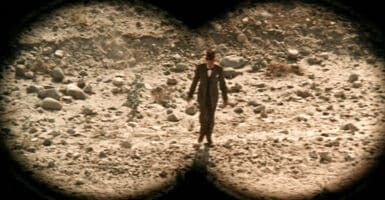Hunger Pains? Virginia Tech Researchers Turned Plant Cellulose Into Edible Starches
This article is more than 2 years old
 Have you ever wanted to live during a time where you could refer to cutting the grass as “going out for groceries?” Well, that time will probably never come, because that’s stupid.
Have you ever wanted to live during a time where you could refer to cutting the grass as “going out for groceries?” Well, that time will probably never come, because that’s stupid.
Virginia Tech researchers have succeeded in being the opposite of stupid, and have figured out a way to transform a plant’s cellulose — the most abundant and inedible carbohydrate on the planet — into an edible starch. Essentially, that could put a gigantic dent in feeding the hungry, considering plant life is prevalent in many places where there are hungry people. (For desert dwellers, there isn’t any literature on if this technique can be used on plants found in mirages.)
“Cellulose and starch have the same chemical formula,” said Y.H. Percival Zhang, associate professor of biological systems engineering in the College of Agriculture and Life Sciences and the College of Engineering. “The difference is in their chemical linkages. Our idea is to use an enzyme cascade to break up the bonds in cellulose, enabling their reconfiguration as starch.”
The process is called “simultaneous enzymatic biotransformation and microbial fermentation,” and Zhang himself designed the experiments and the concept behind the cellulose-to-starch research, while he teamed with Virginia Tech visiting scholar Hongge Chen to invent the biotransformation process. Chen and Chun You, a Chinese postdoctoral researcher, did most of the actual research work.
The enzyme cascade transforms the cellulose into amylose, a linear resistant starch not broken down in the digestion process, which also serves as a dietary fiber source, and is proven to combat risks of obesity and diabetes. I know what you’re thinking: “Why couldn’t they have turned it into garlic bread?” Thirty percent of non-food plant material is converted into amylose, while the remainder is turned to glucose to be used in ethanol production. No waste is produced, and excess enzymes are recycled using magnetic force.
Oh, and it can also be used to manufacture biodegradable films for food packaging and serve as a high-density hydrogen storage carrier. And it’s edible. And it’s perfect.











